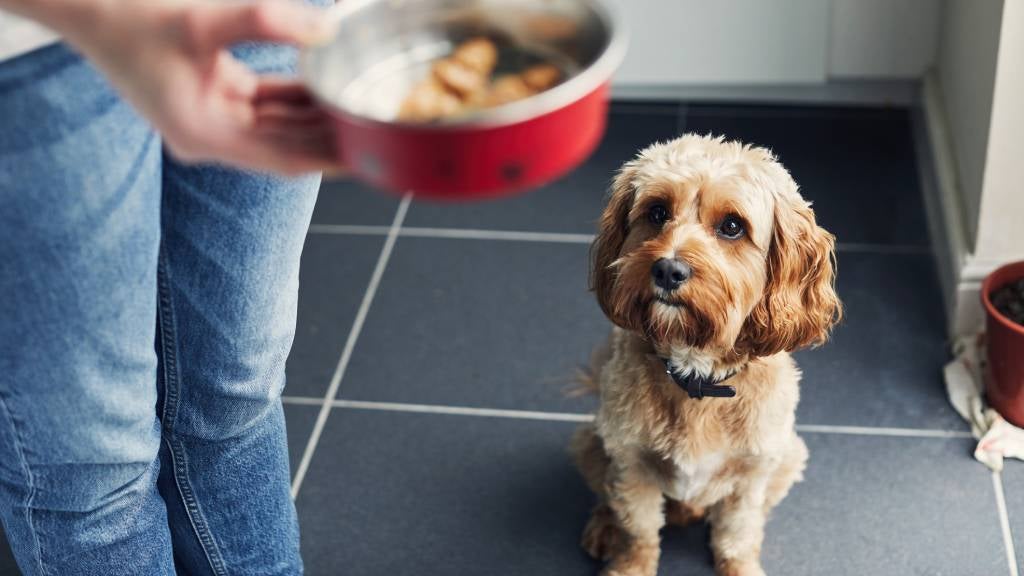Pet obesity: top tips to keep your pets in shape

It’s never too late to think about what 2022 might bring for you and your beloved ngeru (cats) and kuri (dogs) - especially now that we’re well into the year!
Our lovable companions benefit from a healthy body condition just as much as we do. This helps with their life expectancy and works towards preventing the onset of obesity-related diseases such as diabetes. A healthy body condition score* (BCS) also makes veterinary interventions safer and easier - including anesthesia and surgery.
The biggest in the litter
Let’s make this clear, being the biggest is not the same as being the fattest! For most people, extreme obesity should be relatively easy to recognise – as these animals contribute to the one in four cats in Aotearoa that are overweight. However, in one study, 30% of people who were asked didn’t recognise the correct body condition score for their cat. If ribs are not easily able to be felt, and the waist is getting thick, it’s time to get expert advice. Remember that ‘common’ may not be ‘normal’ – a chunky Labrador Retriever might be common, but it’s not normal nor is it healthy.
Here’s 5 top tips for managing your companion animal’s diet and body condition:
1. See your veterinary team – regularly!
Your veterinary team is the best team to provide objective advice on diet and body condition score. Veterinary nurses, as well as veterinarians, are highly skilled in BCS assessment and developing and maintaining weight management programs to help your pets lose weight safely. Veterinarians can also rule out other rare causes of obesity that are not purely calorie related.
2. Get reputable nutritional advice
Misinformation on diets is widespread so it is important to find a reputable source of information. In a study, 72.3% of pet parents considered veterinarians to be the best source of information. More information is constantly becoming available relating to obesity and what causes it. Veterinarians are best placed to provide up-to-date information on these issues and advise on a safe weight management plan for your companion.
3. Use healthy and nutritious options
Weight loss might be the aim, but a crash diet is not, and can be very dangerous for some animals, especially larger cats! It’s best to discuss weight loss programmes with your veterinary team, as there are a number of things to consider including making sure the diet is appropriate for weight loss. It needs to be safe (free of harmful microbes), complete and balanced for your animal’s specific needs – including factoring in their age and any other health issues. Regular weigh-ins at your veterinary clinic to check for a slow and steady weight loss is a great idea.
4. Treats and scraps add up
Reputable training advice will use positive reinforcement techniques – these may include food-based reward systems. Training treats, other treats and scraps need to be included in the overall food intake and should make up no more than 10% of your animal’s diet. For food-motivated animals, you can use their regular food as training treats, taking it out of their daily allowance. If treats are needed, take from the calculated daily allowance.
5. Make weight management fun like a walk
Whether it’s weight gain or loss, get familiar with a holistic weight management program that includes an overall look at lifestyle. Include activities like games and food puzzles for cats and dogs to stimulate activity and for their brains! Weight loss needs to be slow and steady, and long-term success should be considered in terms of long-term Body Condition Score (BCS) – not just the initial weight loss or gain.
Check-in so you know what’s up
Regular check-ins with your veterinary team are important to not only monitor trends but to provide moral support as well! Like in humans, it’s not always easy, and there will likely be setbacks along the way. ‘Weight creep’ happens to us all and is hard to recognise – a quick check-in with an independent expert is a great insurance against future issues and expenses.
It pays to remember that our loved companions don’t buy their own food so as a pet parent, animal health and welfare is our responsibility - don’t give in to cute eyes and begging behaviours!
Treat yourself to a happy pet with SPCA Pet Insurance.
29 Mar 2022
*Weight is the number on the scale (“Tiger” is 3.8kg), while a body condition score (BCS) gives an indication of what that weight means for the size of the animal (“Tiger is 3.8kg; his ribs are palpable, but not visible, and he has no significant fat pad (i.e., his weight for his frame is appropriate).